
If only I could tell you how many social media marketing mistakes I’ve made in my career as a photographer.
Back in 2016, when I started working as a photographer, I didn’t know anything about online marketing or social media marketing. I would go MIA for weeks, create the wrong content, attract other photographers instead of clients, and so many other things that I honestly cringe about today.
Needless to say, I learned social media marketing the hard way. I learned by making a lot of my own mistakes, studying what worked (and what didn’t) and adjusting. This is why I’m writing this post; so I can save you from having the same experience! Instead, you can learn from my mistakes – and the mistakes I see other people making all the time.
These mistakes not only hold you back from growing your social media presence, but they also prevent your business from growing as fast as it should! So, let’s get right into it, shall we?
Keep reading to find out:
The 15 Social Media Mistakes You Should Avoid Making
1. Not Understanding Your Voice
The biggest problem I see in most businesses out there – especially small business – is that they don’t take time to plan. People create their businesses and grow it as they go without giving it too much thought. If only they knew how much extra time and work this strategy causes, they might sit down and plan it out a bit.
The first thing you should do is understand who you are as a business, in other words, who your brand persona is. We talk a lot about it in other articles, like this one on how to create a content calendar, so I’m not going to go too deep into it now. Basically, you should define who your business is, establish its attributes (funny or serious, sophisticated or relaxed, formal or casual, etc.), and make sure everyone on your communication team is on the same page.
Understanding your voice creates consistency and people are drawn to consistency and familiarity.
People want to know what to expect so they can latch onto your business’s values and trust you and your company. This voice isn’t just about the words you use, but your visuals, too. When everything looks consistent, people will know it’s you whenever they see your posts.
2. Not Knowing Your Audience
This is another consideration you should make when planning your marketing strategy. You should know your audience. We’re not talking just age and gender. You should know their income, motivations, history, the problems they face, etc.
When you know your audience and what is going on in their lives, it’s easier for you to connect with them, show them how you can solve their problems and build a sense of trust.
Your audience will feel like you truly understand them and their pain points and they’ll instantly be drawn to you. They’ll also be more likely to tell their friends and family about you, which is huge, whether you’re just starting out or you’ve been established for a while.
3. Creating the Wrong Content
When I started to create content on my blog and on social media to promote my work as a photographer, I will admit that I was creating the wrong content. I was doing this because I didn’t know who my audience was. Maybe I had a surface level understanding, but I didn’t go deep enough into their problems and how I could solve them.
Instead of writing about how people can prepare for a photoshoot – something my clients were desperate to know – I was writing about how to take better pictures.

On the one hand, it was a good topic because it was reinforcing the fact that I was a professional photographer. On the other hand, it was bringing the wrong people to me – at least at that time. These days, I teach marketing to other creative people, but at the time, my goal was to attract people who were looking to book me for my photography services.
Whenever you create content, think about what your client needs and how you can help them solve a problem – within your niche – and how you can improve his or her life. Seems basic, but you’d be surprised how many people drift off course with their content!
4. Lack of Goals
This is another problem I used to face. I did not have clear goals… and if you don’t have clear goals, you’re basically treading water.
Goals give you a sense of purpose and motivate you. It helps you find the path you need to go down.
Let’s say you’re posting on social media regularly but you don’t really have any solid goals for your channel. Why are you doing all of that work? You’ll probably tell me that’s because it’s important (which it is) but you might not know why it’s important for you. If you don’t know that, how do you know what to post and which hashtags to use? How do you know if what you’re doing is working or not? Without goals, you’re going to be lost.
Let’s say you want to increase your brand awareness. You could set a goal to get 1000 impressions in each post on Instagram in this quarter, get 300 shares of your Facebook posts during this quarter, etc.
When you have solid, measurable goals, you will have clarity around what you’re doing, how you’re doing it, and why you’re doing it.
5. Not Having Any Social Media Marketing Strategy
You might think if you’ve done steps 1-4, you have a pretty solid social media strategy. This is not the case. You might know your voice, your audience, and your content. You might have some really good goals. But do you know how all of these things are going to fit together?
You want your posts to guide your audience from their problem to the solution – which is being offered by you. But this will not happen with just one post. You need to map out your customer journey.
You need a good mix of content that appeals to people’s emotions and logic.
You also need to understand that new people are coming to you all the time, so this strategy needs to be organized and thought out. You can’t just post on the fly as inspiration strikes.
If you need help creating a social media marketing plan that works, we have a blog post that tells you exactly how you can do it. Trust me, planning your content will help you get to more people and convert more of that traffic into sales!
6. Not Tracking Your Results
How many times have you done this? You spend time coming up with really great goals, but then you never go back to see if you achieved them. I know a lot of entrepreneurs that create goals and then simply forget them. They have good intentions, but at the end of the day, they don’t know if they achieved the results they aimed for or how their posts performed on social media. Big mistake!
When you don’t track your results, you have no idea what’s performing best among your audience. You don’t know what works and what doesn’t and consequently, you don’t know what can be improved. So, in order to create amazing content on social media and step up your game, you need to analyze your results and track the right metrics… which leads us to #7.

7. Tracking the Wrong Metrics
You’ve finally hit 10k followers! Congrats! That’s impressive, but what does it mean for your business? If your goal is to get more sales or grow your email list, your follower count might not be the thing you should be focusing on.
Most people lose sight of their goals and instead, they measure their success based on the number of followers and likes they get. However, getting followers and likes is easy – you can even buy them, which I do not recommend (we will talk about this in a second). If these people aren’t interacting with you, sharing your content, or buying your offers, they’re not really worth anything.
Let’s pretend again that your goal is to increase brand awareness. In this case, you will want to consider the reach your posts have – how many impressions, saves, shares, etc. But if you want to sell more, maybe you should start looking at the number of clicks you get on the link in your bio, the number of swipe ups you get on an Instagram Story post, or how many people have requested more information about a product or service.
8. Buying Followers, Likes and Automating Interactions
This is the worst mistake you can make! I’m serious. DO. NOT. BUY. FOLLOWERS. OR. LIKES. OR. ANYTHING. AT. ALL.
If you feel tempted to buy followers to appear more successful than you are, please stop for a second. I truly believe that buying fake followers or likes is the worst investment you can make.
First of all, they will claim that you are buying “real people” but it is almost always bots. Social media companies are able to tell when your account is full of bots and they will penalize you for it. The algorithms will start to devalue your content, which means you’ll end up with lower stats than before. You might get a temporary boost to your social status, but people will be able to quickly tell that it’s inauthentic.
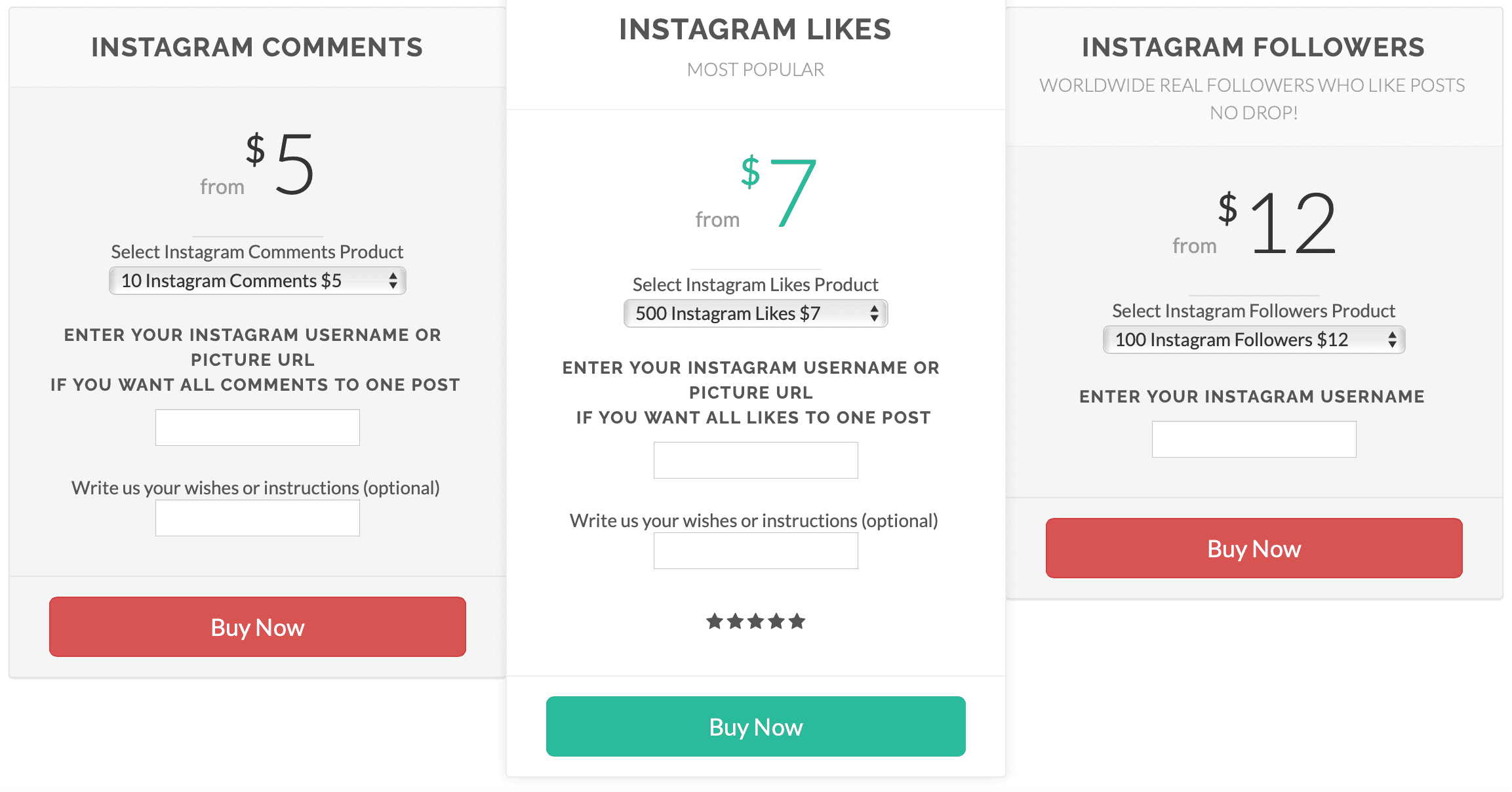
Integrating a bot to comment on or like other people’s posts automatically is just as bad in my opinion. It’s always obvious that it’s a bot and many people will report these interactions to the social media sites as being spam. This can spell serious trouble for the integrity of your account.
If your goal is to get more eyes on your account, it’s worth your time to do it manually. At the end of the day, you’re going to get better results when you take the time to interact with people authentically and thoughtfully. Even if you can’t reach as many people this way, the likelihood that someone is going to follow you back or click through to your site is so much higher than if they just get generic spam comments from a bot.
9. Trying to be Everywhere
You don’t need to be everywhere to find success on social media. This is especially true if you’re a small business that doesn’t have a dedicated marketing person who can spend all day on social.
Concentrate your efforts on one or two platforms so you can create better content that’s highly targeted to the right audience.
When you focus on showing up on the platforms your audience hangs out on most (another reason why it’s so important to know your audience) you’re going to see a lot more return on your efforts. For instance, if you own a more formal business, you have no reason to create a profile on TikTok where it’s mostly young people posting funny videos. But, you might find a lot of success on LinkedIn.
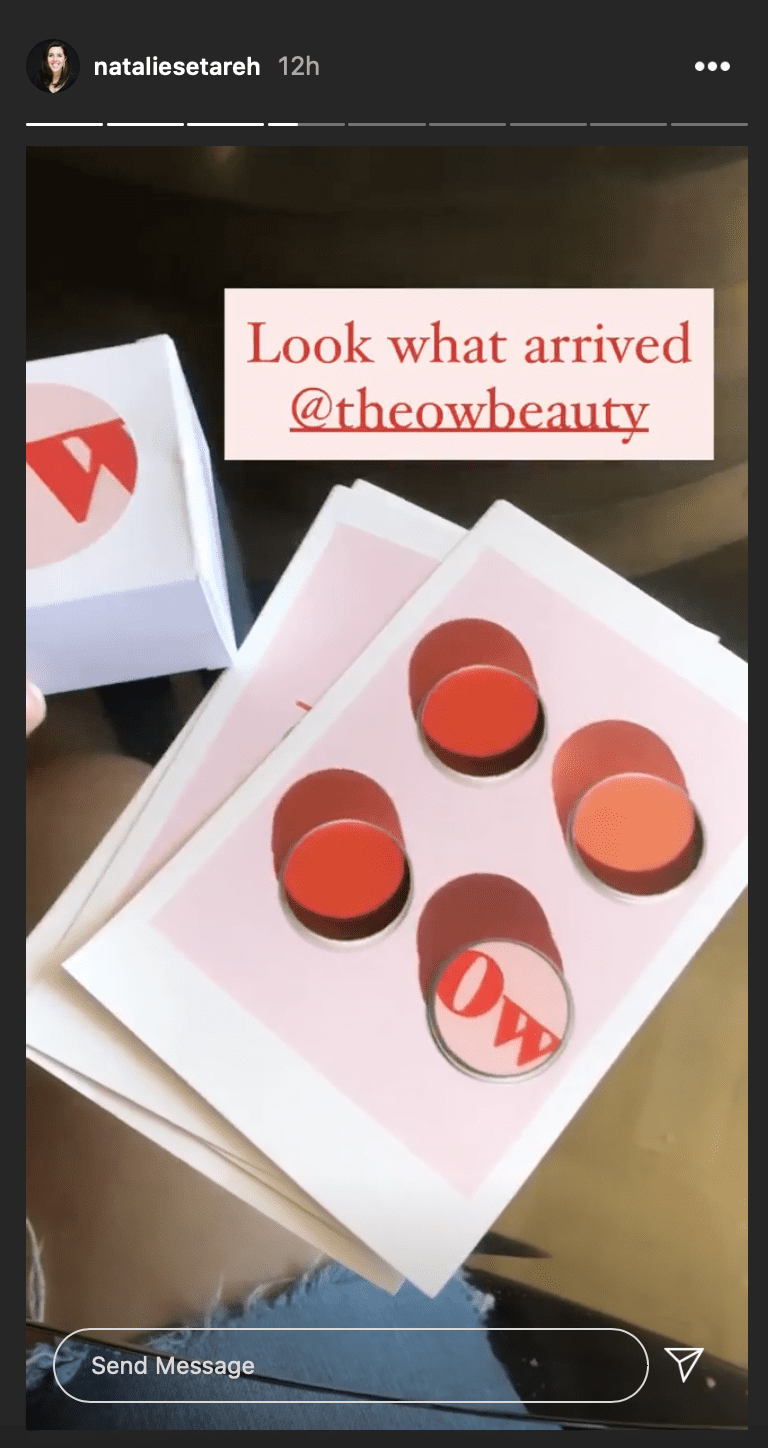
10. Treating All Social Media Platforms the Same
A lot of businesses that make mistake #9 are also guilty of this one. Posting on social media takes a lot of time and effort. So, of course, you want to maximize your efforts and for a lot of people, that means just posting the same piece of content on every social media platform. Easy peasy, right?
Not so fast. Each social media platform is different, and consequently, the users on those platforms also behave differently. On some channels, people like to spend time reading long-form articles. On others, they want to quickly scroll their feed to unwind. You need to know how your audience behaves on each platform and then adapt your content to suit that.
For instance, you might post a long article you wrote on LinkedIn, then take that same article and turn it into a four-minute video for Facebook (because videos perform well there). You could also distill the information down into 5 quick tips and post them to Instagram Stories. You can use the same piece of content or general idea for all your platforms, you just have to know how to cater it to fit the audience.
11. Going MIA
This is another mistake that I have to confess I used to make a lot. I would post something and then go weeks without posting again. I was always saying things like, “I have too much work to post on social media!” It was true, but I didn’t understand how it impacted my marketing and my sales until a friend told me what I’m about to tell you.
When you don’t post consistently or spend weeks without posting on social media, people think you’re not working anymore or that your business is closed.
Often people tend to forget that you even exist. Harsh, right? Maybe, but if people don’t see you, they quickly move on and forget.
Even if you’re extremely busy, I urge you to post regularly. Having a content calendar and social media strategy helps a lot. You’ll already have mapped out what you want to post and when, so you can easily delegate the task out to someone who can take this off your plate. The truth is, a day will come when you’re not as busy and if you haven’t been nurturing your social media followers, that will be big trouble. If you post regularly, there’s always a warm audience waiting to work with you or patronize your business.
12. Speaking, But Not Listening
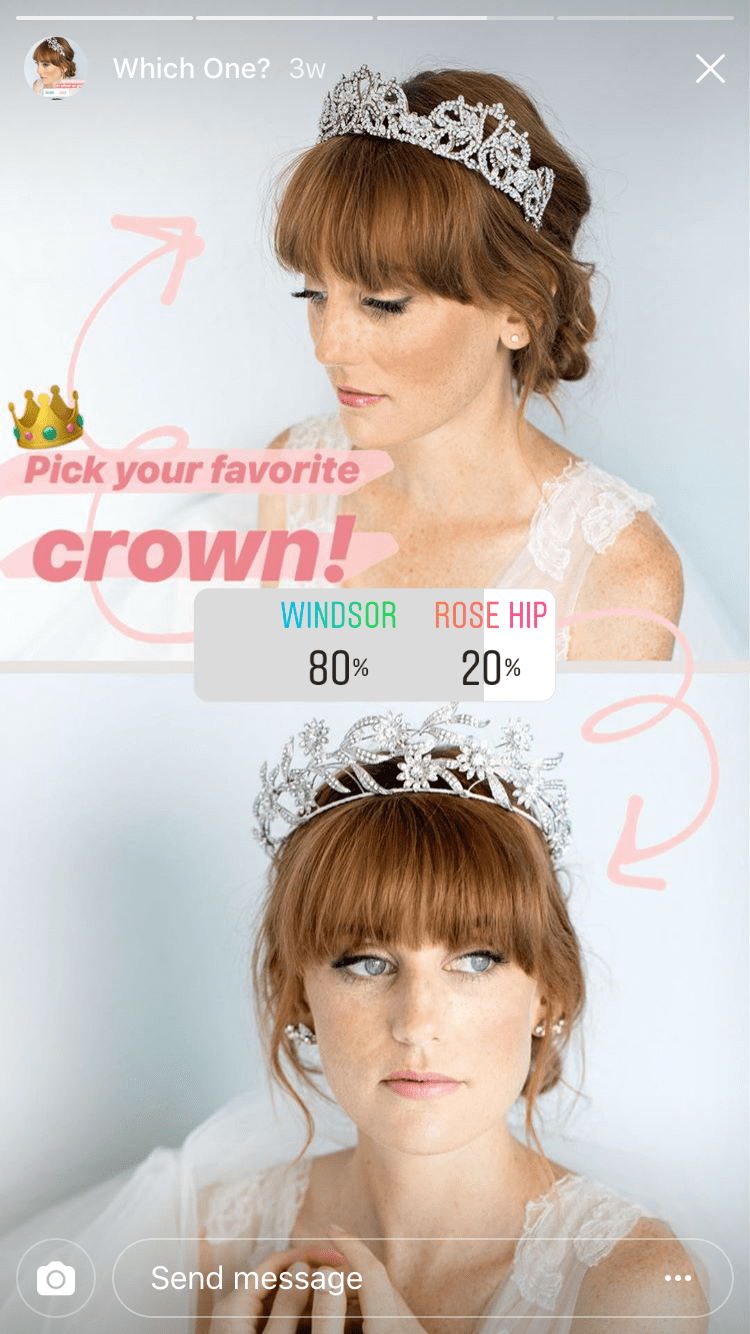
Social media is not a monologue… it’s meant to be a place for connection and engagement.
There are so many brands out there that are so concerned with spreading their message but can’t seem to be bothered to hear what their audience has to say. They don’t reply to comments or messages, they don’t interact with other users, and they don’t ask their audiences anything.
Aside from creating a lackluster experience, this discourages people from interacting with the brand. If they see a bunch of unanswered comments and reviews, they won’t feel like it’s worth their time to leave their feedback, and that’s not good for business!
Make sure you’re interacting with people and that you really care about their opinions. Remember: they are the people you’re trying to help and ultimately, sell to so if you don’t listen to them, your business might not last long. Say it with me: social media is a two-way street.
13. Using the Wrong Hashtags – Or Irrelevant Ones
Some people have no clue on how to use hashtags. They just add a bunch of nonsense hashtags and expect their engagement to skyrocket and their sales to spike. It’s good to be optimistic, but there is a right and a wrong way to use hashtags and when you do it right, you’ll be much more likely to get the results you’re hoping for.
First of all, it’s important to understand that quality over quantity is always the rule when it comes to hashtags. It’s better to use three niche hashtags than thirty general ones. You want to show up in front of the right people, not just everyone.

Another rule is: don’t use hashtags like #WeHaveTheBestItalianFoodThisSideOfTheMississippi. It’s cute, but no one is ever going to search for this. Your goal is to use hashtags people are actually using so that when someone clicks on one of them (in another post, for instance), your content will show up.
Of course, you can always create a branded hashtag for your business and share it with your customers. Tell them to use the hashtag you came up with so you can find and share their posts. This is a nice way to create a sense of community with your customers. Just make sure it’s relevant and easy for them to remember!
14. Ignoring Negative Comments – Or Getting Angry
Chances are, you’re going to receive a negative comment at some point. It’s not fun, but it is part of doing business. When that moment comes, you have to be prepared.
The most important thing is not to ignore the comment. This will not make it disappear, and you’ll just end up making the person more upset because they’ll feel like you don’t respect them and it will make you look unprofessional.
Also, never ever ever leave an angry reply. I know that sometimes you just feel like the comment is really unfair and that you’ve tried your best, but this is not the moment to prove that you’re right. This is the moment to tell your customer that you empathize with them and show them how you’re going to make it right.
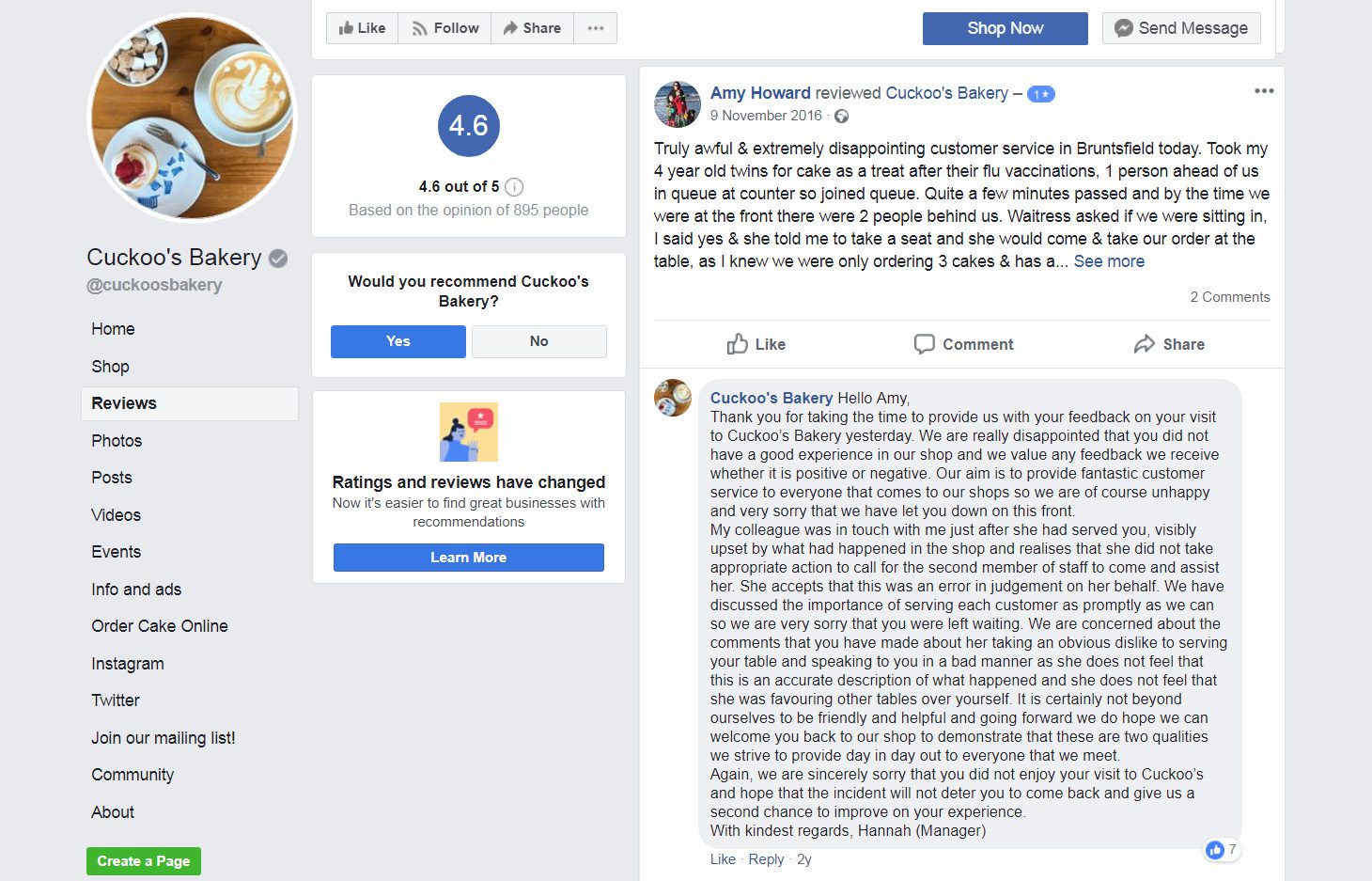
15. Promoting Your Products and Services THE. WHOLE. TIME.
Would you want to follow someone who is constantly pitching and selling to you? No way! You want to follow a brand that posts interesting stuff. An occasional sales pitch or call to action is fine, as long as you’re also delivering tons of value in your content.
Try to aim for an 80/20 mix where 80% of the content you post is interesting, informational, or educational and 20% is promotional sales content. This is referred to as the Pareto Principle and it is an awesome strategy that will most likely lead to more sales because people will come to trust and respect you and your intentions.
Did you like these tips?! Then don’t forget to save the image below in your “Social Media Marketing Tips” board on Pinterest! Also, check out our Pinterest page and follow us to get daily updates + digital marketing and social media tips for small businesses!
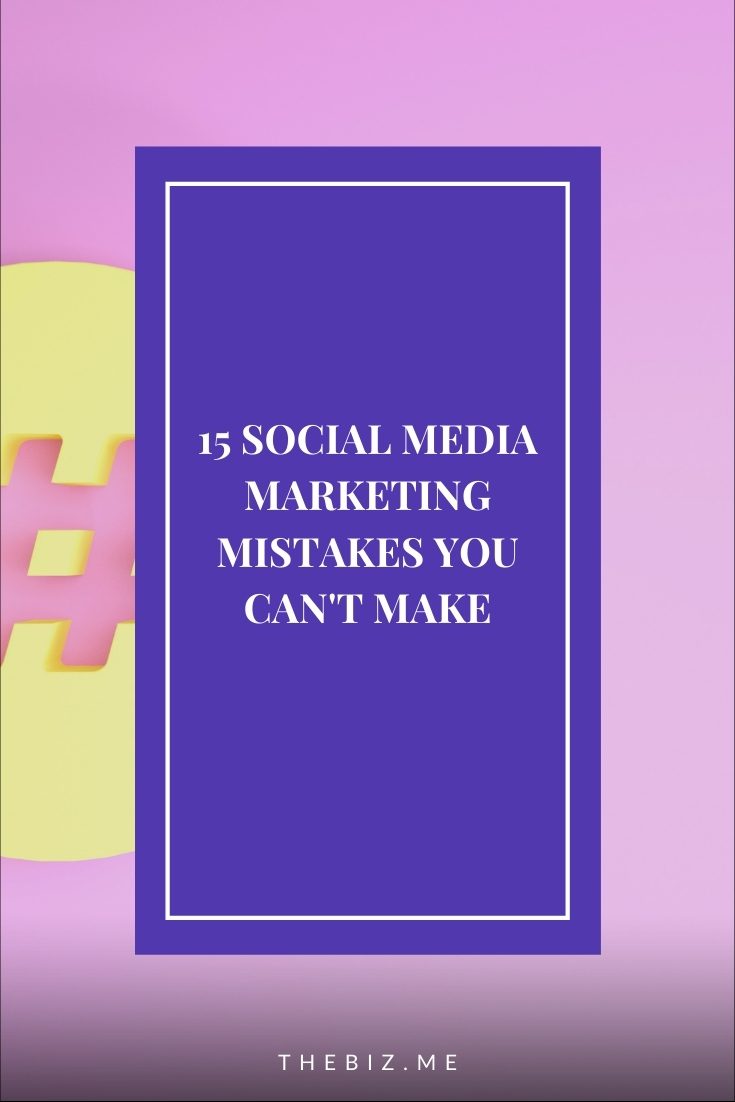
We can’t wait to see what you do. Please tag us using the hashtag #GrowingMyBiz so we can see and share your work!